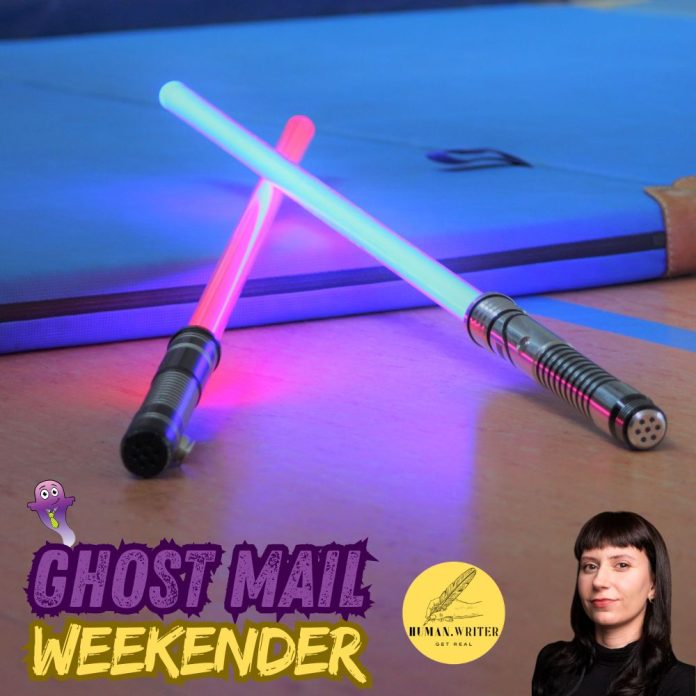In the summer of 1977, a sound was heard that changed the world forever. This wasn’t the sound of a politician’s voice, or the chanting of protesters – no, this was the distinctive sound of a lightsaber powering up.
Star Wars wasn’t the first blockbuster in history. That title belonged to Jaws, which had scared thousands of people out of their beach holidays two years earlier. But George Lucas’ sci-fi fever dream hit a different nerve. Made with a scrappy budget of only $11 million, the first film in the series would go on to gross $307million worldwide during its initial run. When adjusted for inflation, Star Wars is the second-highest-grossing film in North America (behind Gone with the Wind) and the fourth-highest-grossing film of all time.
Suffice to say that the saga of Luke Skywalker took the world by storm. It was fast. It was weird. It had laser swords, space battles, trash-compacting aliens, and a villain who sounded like an asthmatic ghost trapped in a vacuum cleaner. Adults loved it, sure – but the kids? The kids lost their minds.
They didn’t just want to watch Star Wars. They wanted to live it. They wanted to wield lightsabers, fly the Millennium Falcon, and recreate the Death Star trench run on their living room shag carpet.
There was just one problem – there were no toys. Yet.
A New Hope – and a very tight deadline
In 1977, George Lucas was just another ambitious director trying to convince funders to believe in his film. But studios weren’t exactly tripping over themselves to bankroll a space opera about an orphaned farm boy and his golden robot. So when Lucas caught a break and sat down with 20th Century Fox to negotiate his contract, he didn’t go in trying to squeeze every dollar out of the deal. He was playing a longer game entirely.
Lucas agreed to forgo an additional $500,000 in directing fees. In return, he wanted two things: sequel rights, and full control over merchandising
Fox, thinking that merchandising meant plastic lightsabers and maybe a lunchbox or two, agreed without blinking. That’s because at the time, movie merchandising wasn’t a thing. Studios sold a few trinkets here and there, but the idea that action figures, toy blasters, and Chewbacca pajamas could be a billion-dollar revenue stream was, quite frankly, laughable.
Except Lucas didn’t think so. He understood something no one else did: Star Wars wasn’t just a film – it was a universe; one that kids would want to bring home, play in, wear on their shirts and reenact in the backyard. The story didn’t end when the credits rolled. For the children in the audience, that’s when it just began.
That insight turned out to be arguably the most valuable business instinct in Hollywood history.
By the end of the 1978 holiday season (just one year post-release) Star Wars toys had generated more than $100 million in sales. Over the next 40+ years, Lucasfilm and its licensing partners would sell over $20 billion in Star Wars merchandise, from action figures and Lego sets to bedding, cereal, even toothbrushes.
Lucas was set to get a cut of it all. But his first challenge would be to find someone – anyone – willing to actually make the toys.
The underdog from Cincinnati
Enter Kenner Products. Not exactly a toy titan, they were best known for Easy-Bake Ovens, Spirographs, and the weird satisfaction of their Stretch Armstrong dolls. Based in Cincinnati, they were a mid-sized operation with big dreams. And one of those dreams belonged to Bernie Loomis.
Loomis, Kenner’s president, read about Star Wars in a trade magazine. He hadn’t seen the movie, but he had what colleagues called a “golden gut”, or an uncanny sense for what would sell. And Star Wars, he believed, was going to be huge.
So in early 1977, just months before the movie’s release, Loomis and his Kenner team flew to Los Angeles and met with Lucasfilm at the Century Plaza Hotel. The good news was that they won the pitch, which gave them exclusive rights to make and distribute Star Wars toys. The bad news was that they had almost no time to do so. Star Wars came out in May of 1977 and after some back and forth, the Kenner contract was eventually signed in June. If they wanted to meet the expected Christmas demand, then they would have to hustle.
The problem with this plan is that toy development in the 70s took much longer than you would imagine – usually somewhere in the vicinity of two years. This was the time required to get new toy designs through tooling, moulds, safety testing, manufacturing, distribution and marketing.
Kenner didn’t have two years; if they were lucky, they had eight weeks before Christmas shopping started.
Still, both sides were desperate. Lucas had been rejected by bigger companies. Kenner was looking for its breakout hit. And so they shook hands on a deal: Lucas would get five cents on every dollar of Star Wars toy sales, indefinitely, and as long as Kenner paid at least $10,000 in royalties each year, the contract stayed alive.
It wasn’t a great deal, especially for Lucas (in theory at least), but when you’re pitching toys for a movie no one’s seen, you take what you can get.
The toy that wasn’t there
By July of 1977 – one month after the Kenner toy deal was secured – Star Wars had exploded into a full-blown cultural supernova. Kenner had exactly zero action figures on shelves, and Christmas was coming fast. As the movie continued to break records, kids were begging their parents to bring the galaxy home.
Kenner needed a miracle, which is why they sold a box.
It was called the Early Bird Certificate Package, and it was as absurd as it was revolutionary. For $7.99, parents could buy an empty cardboard display stand, plus a mail-in certificate promising four figures to be delivered between February and June of 1978. No toys included, just the promise of Star Wars to come.
The package came with a membership to the Star Wars Fan Club, some stickers, and a folded backdrop that kids could set up in the hope that something would eventually stand on it. Retailers were skeptical about this plan, and so were some of the parents. After all, who wants to give the gift of delayed gratification? Fortunately, the kids themselves bought into the idea. They didn’t just want toys. They wanted access. And Kenner had given them a golden ticket.
By the end of the year, hundreds of thousands of Early Bird kits were sold. Against all odds, Kenner’s empty box was a hit.
The building of an empire
The first four figures – Luke Skywalker, Princess Leia, Chewbacca, and R2-D2 – finally arrived in early 1978. Kenner followed quickly with eight more: Darth Vader, Han Solo, Obi-Wan Kenobi, C-3PO, a Stormtrooper, Tusken Raider, Jawa, and the ominously named Death Squad Commander. By the end of 1978, demand was still outpacing supply to such a degree that some claimed Kenner was deliberately manipulating the market in order to create the myth of scarcity. In reality, it was just a case of a small toymaker drowning in a tidal wave of demand. When Christmas rolled around in 1978, Kenner had sold over 40 million units, generating $100 million in revenue.
By the time The Empire Strikes Back hit theaters in 1980, Kenner was an empire of its own. By 1985, the company had released nearly 100 unique figures, along with X-Wings, AT-ATs, Death Stars, and even a Cantina playset.
But even galaxies far, far away can go quiet. By the mid-1980s, the Star Wars toy line had slowed. No new movies, plus new competition from G.I. Joe, Transformers, and He-Man (all of whom had learned from Kenner’s example and cashed in on merchandise big time) meant that the initial tsunami of demand had slowed to a trickle. By 1985, Kenner officially stopped production of its line of Star Wars action figures. In just 7 years, the toymaker had sold over 300 million units. With the exception of one or two (well-received) reboots in the 90s, the line faded into memory.
Today, it’s easy to take it all for granted. Franchise merchandising is an industry standard. Every Marvel movie gets its Funko Pop army, while every Disney film has a toy aisle waiting.
But in 1977, there was no template and no trend for Kenner to follow. They had to take a few gambles to prove that merchandising could drive a franchise, not just chase it. As for George Lucas, that five-cent royalty deal that he took out of desperation became one of the most lucrative contracts in entertainment history. He famously used the merchandising revenue from the first Star Wars film to make the next two.
About the author: Dominique Olivier

Dominique Olivier is the founder of human.writer, where she uses her love of storytelling and ideation to help brands solve problems.
She is a weekly columnist in Ghost Mail and collaborates with The Finance Ghost on Ghost Mail Weekender, a Sunday publication designed to help you be more interesting. She now also writes a regular column for Daily Maverick.
Dominique can be reached on LinkedIn here.





Years ago I saw an interview with Harrison Ford and they talked about the first Star Wars. HF basically said they were all new, young, out of contract actors with nothing much else to do and George Lucas didn’t have money to pay them royalties from the box office, which they took for better or for worse. He also said they didn’t really mind because they had so much fun making the movie and most hoped to make a name for themselves as well. They never regretted that deal either.
Super article and most interesting. America is where this type of culture comes from.
I have always been a Star Wars fan and to this day use the Storm Troopers musical intro as the ringtone on my phone !!